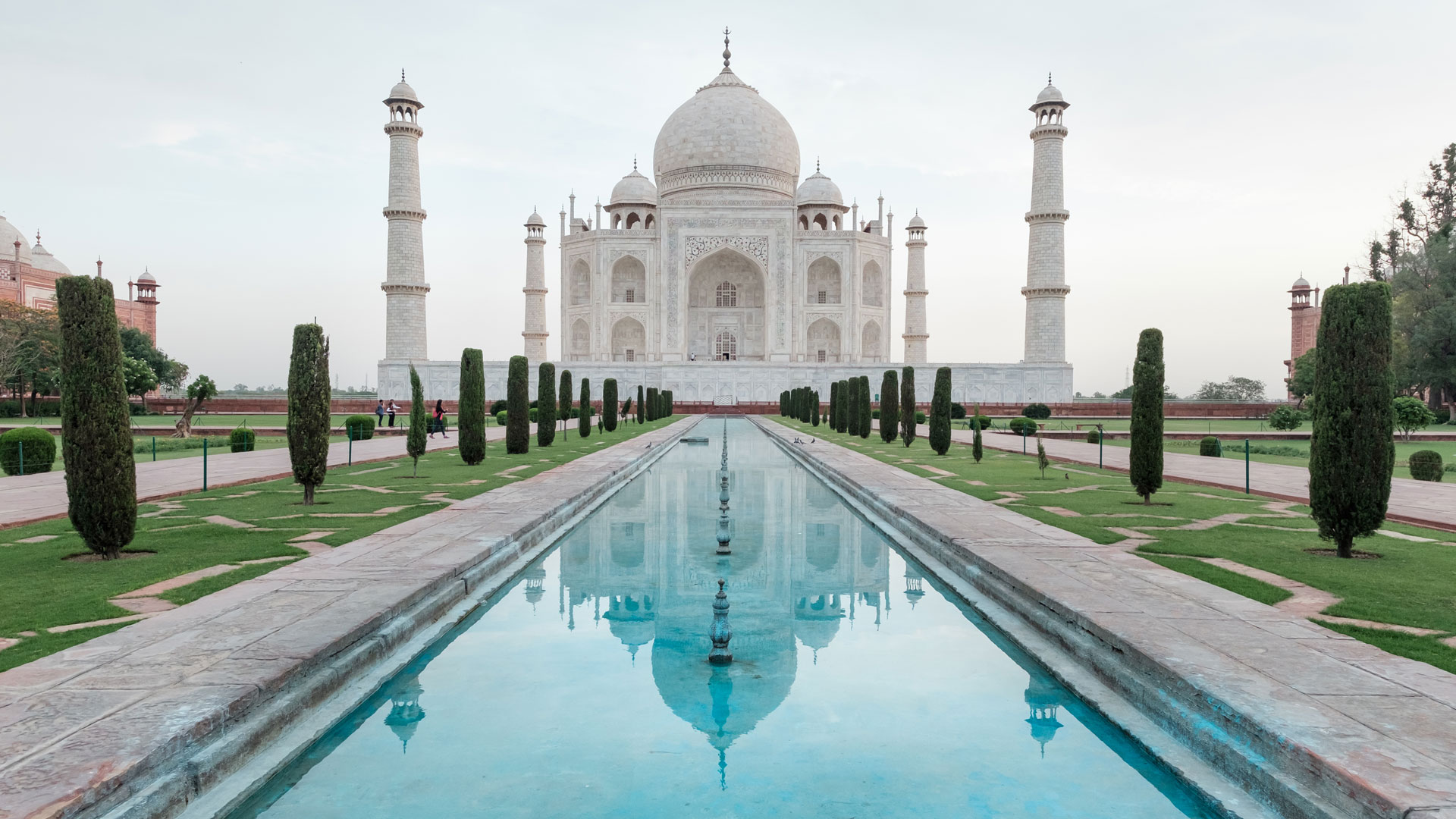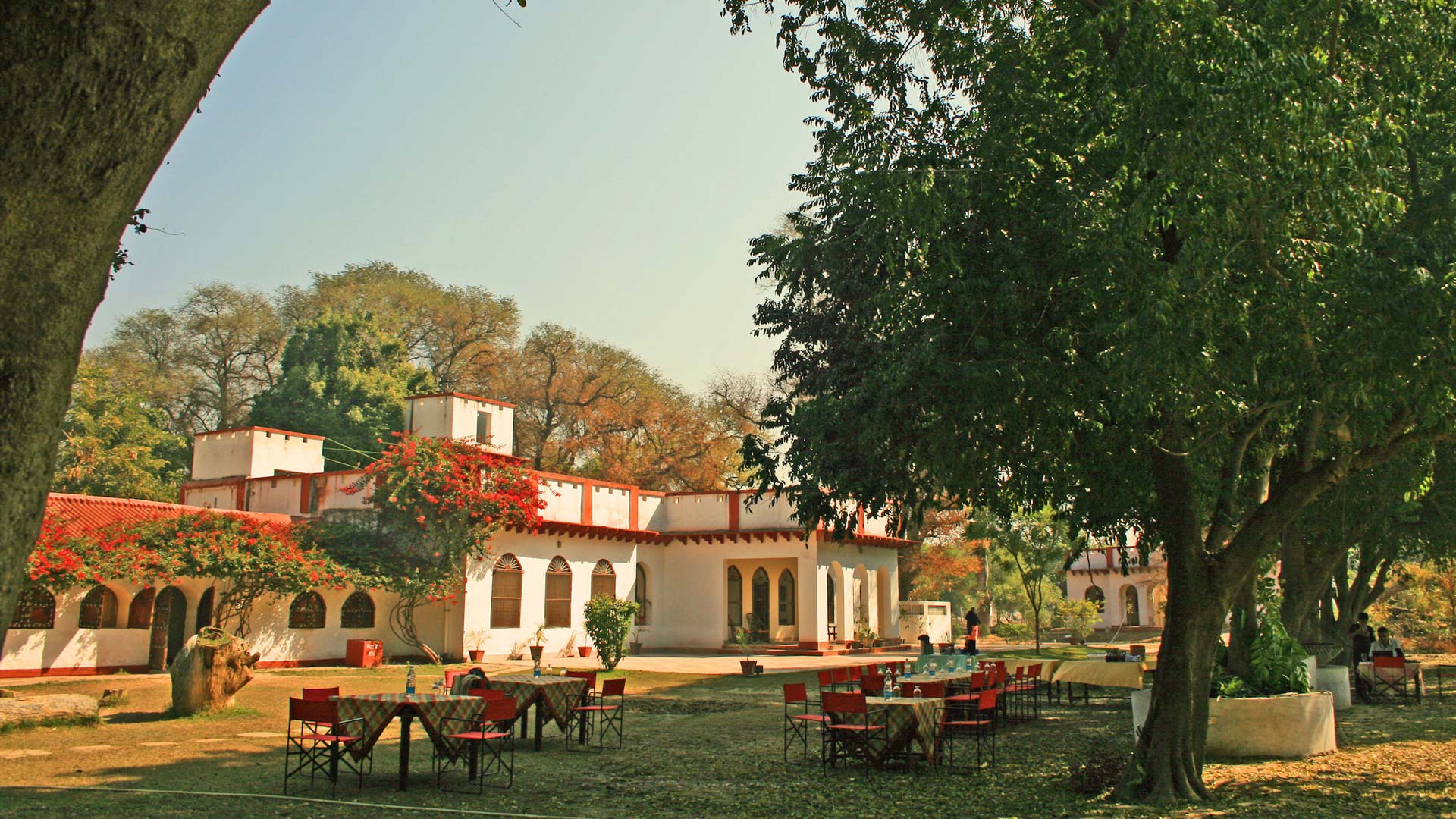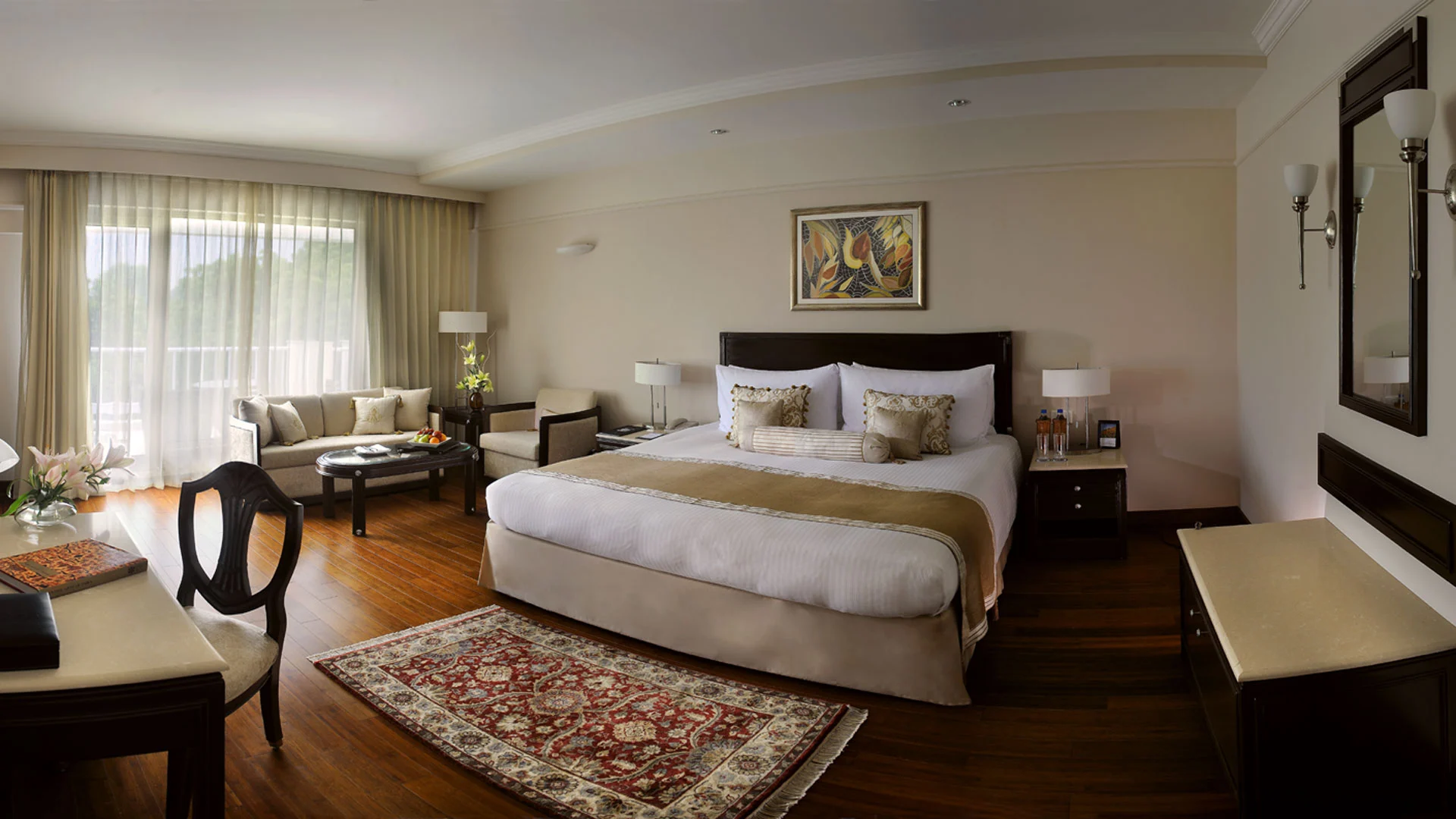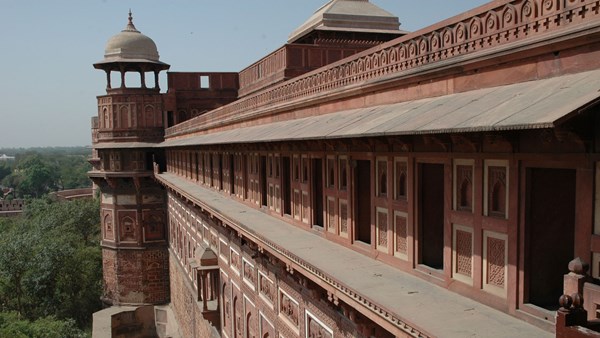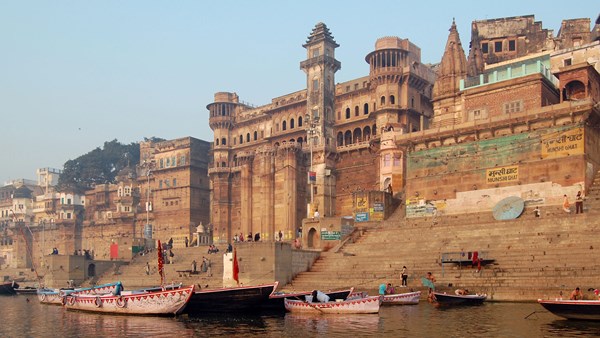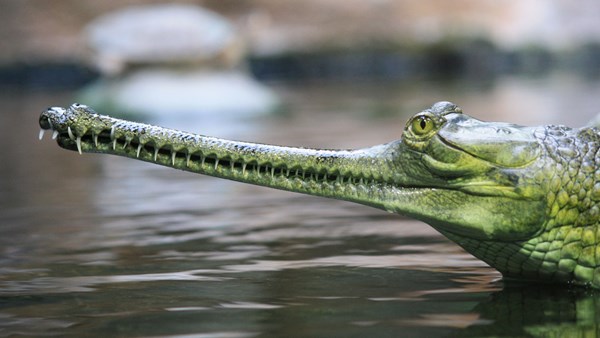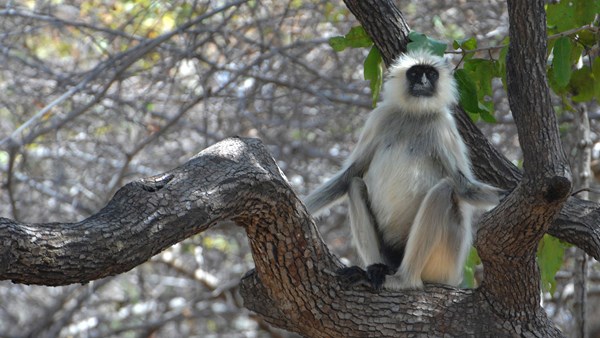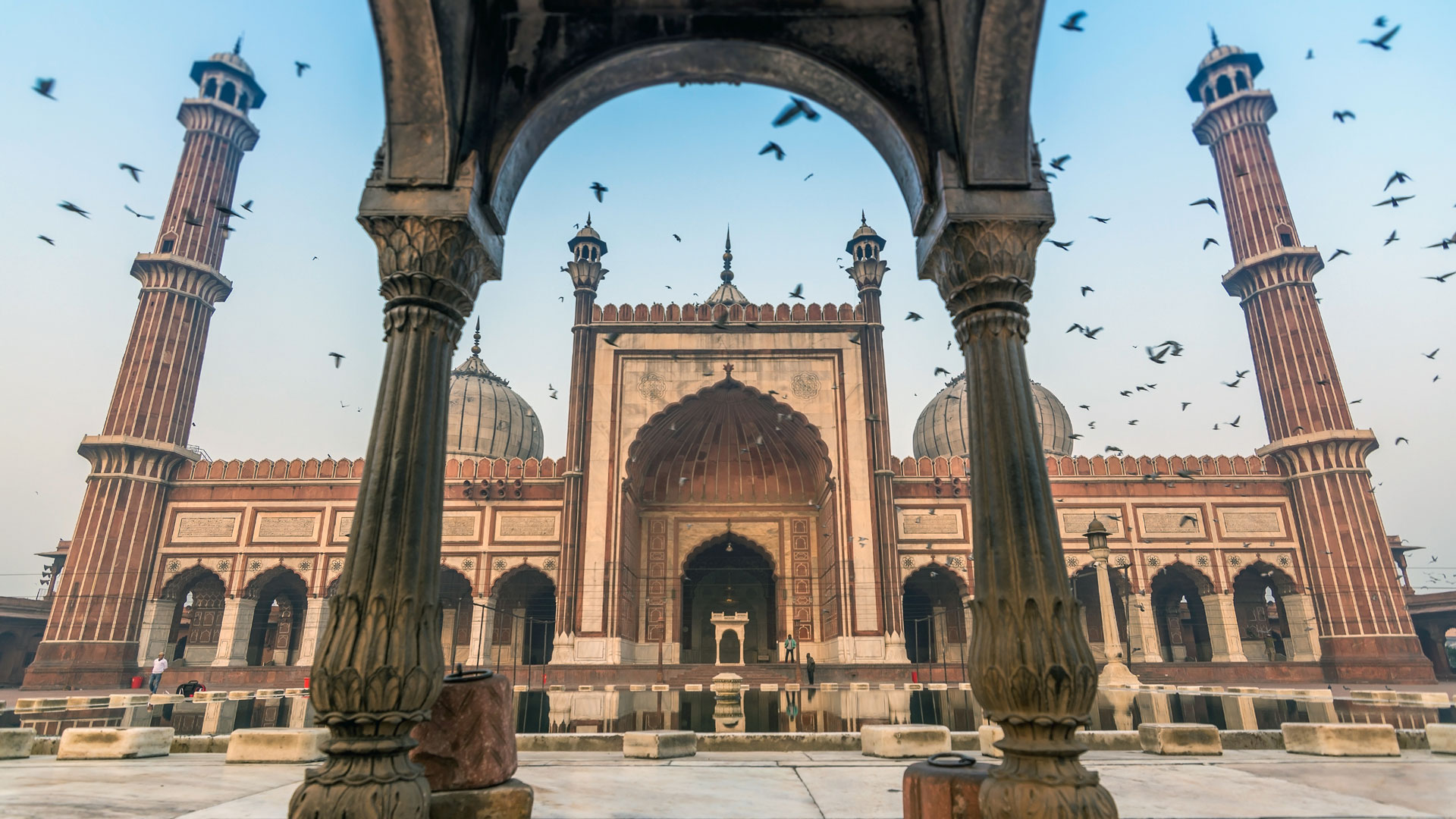By alternating between wild and urban destinations, this trip is sure to keep you mesmerised by India’s riches right up until you leave the country.Experience northern India’s cultural and spiritual hotspots and travel through a diverse range of wildlife habitats, heading from the bustling capital of New Delhi to the delicate ecosystem of Dudhwa National Park.
Perfect for the traveller wanting to experience the best of both worlds on their trip to India, this 15-day safari alternates between some of the country’s most stimulating cultural centres and awe-inspiring wildlife habitats, giving you a taste of everything northern India has to offer. One day you’ll be walking through Delhi’s bazaars and marvelling at its architecture, then the next you’ll find yourself travelling along the wildlife-rich Chambal River. Days in the shining cultural lights that are Varanasi and Lucknow will transport you to another time, while Jeep safaris in Dudhwa National Park give you a chance of spotting everything from tigers and leopards to turtles and monkeys.
What makes this trip extraordinary
- Explore the old and new sides of Delhi and get a sense of India’s past and future.
- Travel through the Chambal Valley region in search of gharials and Ganges river dolphins.
- Experience the wonders of India’s holiest city, Varanasi, and the multicultural charm of Lucknow.
- Embark on thrilling safaris through Dudhwa National Park, one of the last places on earth where one can find the unique Terai ecosystem.
Itinerary
Arrive Delhi
Upon arrival in Delhi and after passing immigration and baggage control, you will be met by our representative who will accompany you to your hotel. The standard check-in time at Claridges is 2pm, giving you the rest of the day to spend at your leisure, recover from your flight and prepare for tomorrow’s adventure.
Overnight: Claridges Hotel
Delhi
A day of culture and colour awaits you as you embark on a guided tour through Old and New Delhi. Starting with the former, you’ll explore the historic part of India’s second-largest city as you make your way through a maze of twisting lanes and bustling bazaars filled with life. Drink in the atmosphere and enjoy the sights, sounds and smells of this magical country, then watch the world go by from the back of a rickshaw. You’ll visit famous local landmarks like the Red Fort - a UNESCO World Heritage Site once home to emperors that is surrounded by the busy Chandni Chowk market - as well as the marble minarets and domes of Jama Masjid, one of India’s largest mosques. New Delhi offers an experience apart which reflects its name, a city whose architectural design owes much to the work of 20th-century British architect Edwin Lutyens. His classical influence can be seen in the 137 ft-high war memorial India Gate, the Sansad Bhawan (India’s House of Parliament) and the Rashtrapati Bhawan (the official residence of the President of India). Your tour through India’s capital also offers you the chance to visit cultural attractions including the Qutab Minar, a gigantic minaret measuring 239 feet tall, and the resplendent garden-tomb of the 16th-century Mughal emperor Humayun, a building considered to be the architectural forerunner of the Taj Mahal.
Overnight: Claridges Hotel (B)
Delhi - Chambal
Departing Delhi in the morning, you’ll be taken on a five-hour drive to Chambal in the south, where you’ll then be transferred to your hotel. The Chambal Valley’s rugged landscapes and isolation from India’s densely populated cities lends the area a unique charm, and makes it a fantastic place to spot a rich diversity of wildlife. Here one can find the National Chambal Sanctuary, a 2,100-square-mile protected area running along the Chambal River near the confluence of Rajasthan, Madhya Pradesh and Uttar Pradesh. This protected ecosystem provides a vital habitat for the endangered Ganges river dolphin and critically endangered gharial, as well as 311 species of resident and migratory birds. Visitors here are also in with a chance of seeing mugger crocodiles, smooth-coated otters, jungle cats, golden jackals, Indian wolves and eight species of turtle.
Overnight: Chambal Safari Lodge (B, D)
Chambal
Today you will be taken along the Chambal River for a boat-based safari led by an expert guide. The boat itself will be operated by boatmen highly skilled in manoeuvring close to the river’s residents, providing intimate encounters with the local wildlife without disturbing them. You’ll also be sharing your boat with a team of specially trained naturalists, who will dispense expert information about the animals you spot. Disembarking from the boat in the afternoon, you will then be taken to the historic ruins of Ater Fort, a 17th-century stronghold that was the scene of numerous battles between the Rajput, Maratha and British armies in times gone by. You can enjoy some glorious views of the Chambal Valley by climbing atop the ramparts, examine the work being done by Indian archaeologists to restore the fort, and explore the surrounding ravines on camelback.
Overnight: Chambal Safari Lodge (B, L, D)
Chambal
Swapping your boat for a Jeep, today’s safari takes you to the Sarus Crane Conservation Reserve, a sprawling wetland area interspersed by agricultural fields where one can see large numbers of the magnificently plumaged sarus crane. Restrictions on development have been imposed by the Indian government on these important breeding grounds, which are also home to several species of wetland birds and raptors. After your Jeep safari, the evening will see you taken to the deeply ravined landscape of Batheshwar within the Chambal Valley. Here you’ll have an opportunity to visit the Batheshwarnath Temple and ghat (a series of steps which lead down to the river) which are both dedicated to the Hindu god Shiva. These act as venues for local rituals and ceremonies.
Overnight: Chambal Safari Lodge (B, L, D)
Chambal - Agra - Varanasi
Another day, another Jeep safari. This latest excursion will see you head southwest from your lodge to the Chambal Ravines, a stark landscape which nonetheless is a prime habitat for the blackbuck, or Indian antelope. The area is also home to a variety of birdlife, including the Indian courser. After your safari is concluded you will be driven to Agra airport to board your onward flight to Varanasi. Regarded as the spiritual capital of India, Varanasi is the holiest of India’s seven holy cities, also known as the Sapta Puri. Sometimes referred to as Kashi, or “City of Light”, Varanasi welcomes thousands of pilgrims a year who come to worship the rising and setting of the sun, bathe in the Ganges and cremate their dead. One of the elements which sets the city apart is its variety of ghats. At least 84 stone embankments lead down into the sacred river of the Ganges, some of which are over 1,000 years old.
Varanasi
Spending a full day in Varanasi allows you to experience the two most auspicious times in Hinduism: sunrise and sunset. An early-morning boat ride presents a serene opportunity to witness the rising sun, with a panorama of Indian life surrounding you. Pilgrims bathe in the river, yogis meditate along the riverbank, and washerwomen prepare for the day ahead. With time moving on you disembark the boat, moving through the streets and lanes of this ancient city whose history goes back as far as 2,500 B.C. Gaze in awe at the gold-plated Kashi Vishvanath Temple, visit Bharat Mata Mandir’s remarkable marble relief map of an undivided India, and stand underneath the tallest temple tower in the world at the New Vishwanath Temple. Time permitting you will visit Sarnath, yet another famous sacred site, which marks the spot where the Buddha gave his first sermon in 500 B.C. And as the day draws to a close you will return to the river at sunset, listening to the bells that call worshippers to the evening aarti ceremony and watching cremation fires illuminate the darkening sky.
Varanasi - Lucknow
After a six-hour drive to Lucknow in the morning, you will be met upon your arrival and assisted for a smooth check-in. The capital city of Uttar Pradesh is a famously multicultural destination that served as the seat of power of the Nawabs of Avadh, who ruled this region during the 18th and 19th centuries. Their legacy is still visible in Lucknow, from the colossal Bara Imambara religious complex to the traditional gharara outfit worn by the city’s women. In the evening, you can enjoy a visit to the night market here and walk through the seemingly countless stalls.
Lucknow
Today’s itinerary includes a sightseeing tour of Lucknow that will take in all the imperial splendour that has fascinated visitors for generations. Everything from the food and architecture to the cultural etiquette bears the influence of Nawabi culture, and soaking in the unique atmosphere here is a real joy. Make sure to walk through the imposing gates of the Rumi Durwaza, an 18th-century construction that stands over 60 feet tall which has become synonymous with the image of Lucknow. Also of note is the Chota Imambara, a marvellous mausoleum built by the third Nawab of Awadh that boasts turrets, minarets, gilded domes and extravagant decorations like chandeliers and Islamic calligraphy. A somewhat different attraction is The Residency, a group of several buildings built as the residence for the British Resident General at the turn of the 18th century which eventually fell into ruin after an Indian rebellion which took place in 1857.
Lucknow - Dudhwa National Park
Today begins your adventure to Dudhwa National Park, a protected area on India’s border with Nepal which is one of the last few remaining examples of the Terai ecosystem. This highly diverse and productive habitat consists of a number of different types of forest - from tropical swamp forests to dry deciduous forests – mixed with a mosaic of grasslands and wetlands. Some of the trees here are over 150 years old. The richness of this ecosystem makes it a haven for wildlife, supporting a large number of endangered species.
Dudhwa National Park
For three days you will be able to immerse yourself in this land of natural beauty with both morning and afternoon safaris, each one conducted in a Jeep. The park is home to 38 species of mammal, 16 species of reptile, 90 species of fish and 500 species of bird. Conservation efforts have helped to maintain tigers, leopards and one-horned rhinos here, the latter of which was the subject of a successful reintroduction program in 1984. Elephants, sloth bears, wolves and porcupines also roam the land, while grey langurs – a widespread monkey species thought to be the largest in Asia – inhabit the park’s trees and forest floors. Gharials, Ganges river dolphins and Indian narrow-headed softshell turtles – three distinctive creatures which are all classified as endangered - can be spotted in the rivers that flow through Dudhwa. The park’s most famous resident, however, is the barasingha, or swamp deer. Half of the world’s 4,000-strong population lives within Dudhwa, so a sighting of this mammal with its characteristic multiple tined antlers is one to savour. After a long day in the wilderness, retire to the plush Jaagir Lodge to relax and enjoy the company of award-winning chefs and the lodge’s resident naturalist.
Dudhwa National Park - Lucknow - Delhi
After one final breakfast and safari in the morning, you will be driven back to Lucknow before boarding a flight for Delhi. Upon arrival back in the city in which you began your journey, you will be met and transferred to your hotel to rest.
Depart Delhi
After checking out of your hotel, you will be assisted to the airport to board your flight back home, safe in the knowledge that you’ve made memories that will last a lifetime.
Accommodation
- Claridges Hotel
- Chambal Safari Lodge
- Gateway Hotel
Cancellation Policy
Life is unpredictable and we understand that sometimes you have to cancel or change your trip dates and it is our endeavor to make it as easy as possible for you. However, please understand that we plan everything including guide fees, permits, accommodation, and ration in advance. Therefore, any cancellation means inconvenience and certain losses to the people involved in various stages of the program. Keeping that in mind, our cancellation charges are as below,
- Cancellations prior to 30 days from the start of the event: Full refund as cash.
- Cancellations between 30 days and 15 days to the start of the event: 50 % refund as cash.
- Cancellations less than 15 days to the start of the event: No refund.
- Cancellations will be accepted only by email.
Note: We reserve the right to cancel a program before departure in the event of logistical problems arising due to natural calamities, strikes, wars or any other circumstances that make the event inadvisable. In this case, we will refund 50% of the event fees.
Gallery
